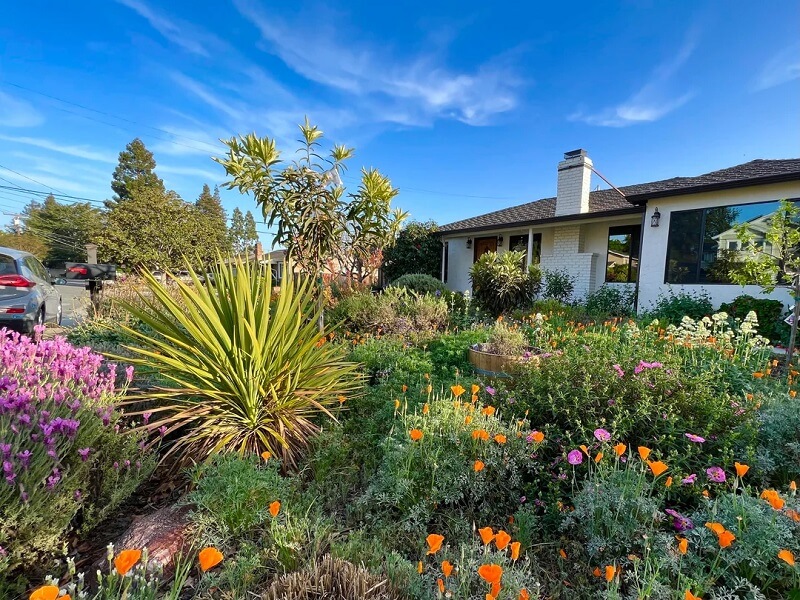A Reddit post in the r/Gardening community is generating quite the buzz, thanks to a user proudly showcasing their gorgeous "drought tolerant pollinator-friendly California garden in spring."
The photo features a stunning array of colorful native plants, artfully arranged to create a vibrant and inviting outdoor space. From cheerful wildflowers to lush greenery, this garden is a true oasis for both humans and wildlife alike.

Beyond its aesthetic appeal, this garden represents a growing trend among eco-conscious homeowners: replacing traditional lawns with native plant gardens. This swap offers a multitude of benefits for both your wallet and the environment.
Native plants are naturally adapted to local conditions, requiring less water, fertilizer, and maintenance compared to non-native species. This means you can save money on your water bills and spend less time on upkeep, all while conserving precious resources.
Moreover, native plants provide critical habitat and food sources for pollinators like bees, butterflies, and hummingbirds. By creating a haven for these essential creatures, you're not only supporting local biodiversity but also helping to protect our food supply, as pollinators play a vital role in crop production.
Even if you're not ready to fully commit to a native plant garden, incorporating just a few native species or replacing a portion of your lawn can make a significant impact. Other eco-friendly, low-maintenance options include clover, buffalo grass, and xeriscaping with rocks and drought-tolerant plants.
The Reddit community was abuzz with praise for this inspiring garden.
One commenter gushed: "So gorgeous! I would be proud to come home to this yard every day."
Another added: "Wow. Excellent work, it looks beautiful. I'll have to pass this photo on to my mom who loves gardening."
A third user chimed in: "Beautiful! I'm sure there are plenty of insects and reptiles that also call it home." This sentiment underscores the true beauty of native plant gardens — they create a thriving ecosystem that benefits all living things, from the tiniest pollinators to the humans who enjoy their colors.
So, whether you're a seasoned green thumb or a novice gardener, consider taking a leaf out of this Californian's book and exploring the world of native plants. Consult our step-by-step guide to get started. Your garden, your wallet, and the planet will thank you.
Join our free newsletter for easy tips to save more, waste less, and help yourself while helping the planet.









